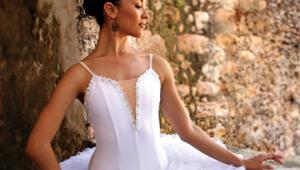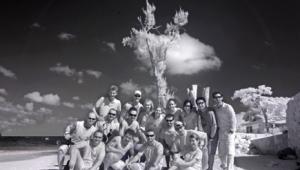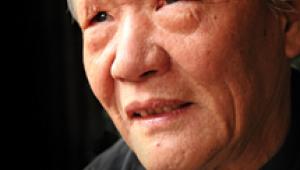Master Class
Have Cameras...Will Travel!
Monte's Mexican Memories-Part 1
It doesn't take me long to pack when I get invited to teach a class in an area that I'm anxious to visit. In my rush I did forget to pack my socks, however. But I had my cameras, a few lenses, a tripod, lots of memory cards, and my passport. Michele Gauger, entrepreneur for The Yucatán Photographic Experience, invited me to join her in Mexico for a photographic safari. I will remember The Yucatán experience for the rest of my life...and have lots of pictures that will help me relive the entire adventure. Here are just a few. I'll start off with
a couple of pictures from my last day there, a day in which the class
relaxed at Michele's little home by the sea. As I took a walk
to the local Internet station (an adventure in itself) I looked back
and saw the side of her next-door neighbor's house. It intrigued
me enough to go back for my camera and get this first picture. |
|||
Later that same day this peaceful scene changed totally when an approaching storm was coming in off the Gulf of Mexico. We were relaxing on her back porch when the shapes of the clouds caught my attention enough to take a picture. Even though I shot in color the picture came out in black and white, because that's exactly what the scene looked like. Later that evening I played with the image in Photoshop. By going to Image/Adjust/Hue/Saturation I took the Hue slider all the way to the right. To my amazement lots and lots of color came about. This intrigued me so much I decided to take that color image and do the exact same thing with it. "Hue" taken all the way to the extreme! Lo and behold, I got a whole new set of colors. So, naturally, I put them all together in one. |
|||
Most people tend to go out
where the light is and photograph into the dark backgrounds behind their
subjects. I constantly corrected those who were still doing that and pointed
out how being inside on the shadowed side of the faces created much more
depth to the subjects and even in the whole picture. Working with ballerinas
was almost like cheating. They fell into poses so gracefully. Yet, I often
had them lean from the waist in the opposite direction from the way they
were facing--much the same as I would do with any of my subjects
in front of my camera. Yes, for photographic purposes I often adjusted
the poses of the dancers to look good from my camera positions. |
|||
Shoot From The Dark
Out Into The Light! |
|||
While exploring the monastery
I found a dilapidated organ in the deep shadows of a hallway. I loved
it. I wanted to use it as a prop, much against Michele's protestations
(she was sure that it would fall apart if touched). I brought it out into
the light of a doorway a few feet away and used it as a prop for this
ballerina. |
|||
Soft Focus Lens Or
Soft Focus In Photoshop? I wanted to let you all know
that I was just invited to be a guest host for Shutterbug's Alaskan
cruise in August 2004. Hey, I'm ready to pack, but this time I'll
remember to bring my socks along...and some sweaters, scarves, and
gloves. I'll have my cameras, flashes, and everything to make this
another adventure of a lifetime. Hope some of you will come along with
me. |























































